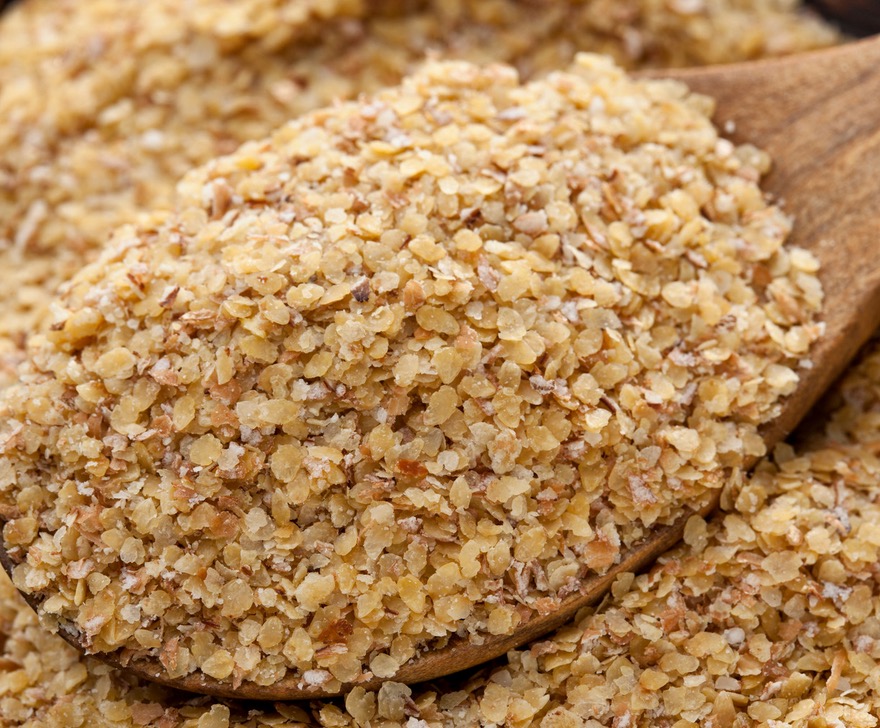Wheat germ is the original OG health food, with claims of its reputed benefits dating back many decades. It's certainly a rich source of many common and unique plant-derived compounds. But is this nutrient-rich food still legitimate today? To assist you in figuring this out, here is a summary of some clinical investigations and benefits of wheat germ, including details on the amount used.
What Is Wheat Germ?
Germinated wheat is the nutritious innermost part of a wheat kernel. It is a small, nutrient-rich component that makes up only about 2-3% of the whole wheat kernel's weight but contains a significant portion of the wheat kernel's essential nutrients. It is a concentrated source of various vitamins, minerals, healthy fats, protein, and fiber. Fun fact: It takes about 40 pounds (640 oz) of wheat to make just 16 oz of wheat germ.
What Is Raw Wheat Germ?
The raw version has not undergone any thermal processing like toasting. Some prefer raw wheat germ because they believe it has superior health effects. The difference, however, is not cut and dry. When researchers fed rats either raw or processed varieties, they found that roasted wheat germ was more easily digested and had a higher protein efficiency ratio. Heat-treating also increases the shelf life too. Heating the germ for just 3 minutes can maintain its quality for up to 90 days at room temperature, while raw only lasts 15 days. Both roasted/toasted and raw versions can be wise additions to any healthy diet.
What Germ Nutrition
Wheat germ fits into a clean eating program because it possesses a broad spectrum of nutrients, including:
- healthy unsaturated fatty acids
- vitamins such as folate, vitamin E, and niacin
- minerals like magnesium and zinc
- choline asparagine and glutathione
- fiber and protein
- spermidine
This germinated concentrate is 26% to 35% protein, 10% to 15% lipids, 10% to 14% dietary fiber and about 4% minerals. This wellness food also contains all 9 essential amino acids that humans cannot manufacture on their own. This includes the branched-chain amino acids (BCAAs): leucine and isoleucine valine.
What Germ Nutrition (3.5 oz)
According to the USDA, here is a summary of the nutrients in 3.5 oz.
| Amount | |
| Calories | 360 |
| Protein | 23 g |
| Total fat | 9 g |
| Fiber | 13 g |
| Calcium | 39 mg |
| Iron | 6 mg |
| Magnesium | 239 mg |
| Phosphorus | 842 mg |
| Potassium | 982 mg |
| Sodium | 12 mg |
| Zinc | 12 mg |
| Folate | 281 mcg |
Don't be turned off by the 360 calories. Most people only use one or two tablespoons per day.
What Germ Peptides
About 30% of this nourishing food contains wheat germ peptides, which are small strings of between 5 and 50 amino acids. While this remains a mostly untapped area of research, wheat peptides appear to have various properties ranging from antioxidant and antihypertensive effects to maybe even anti-cancer effects.
Wheat Germ Microbiome Effects
Wheat kernels appear to have prebiotic effects. In other words, it feeds healthy gut bacteria and encourages their growth. In one study, wheat bread enriched with just six grams of this food concentrate was shown to promote improvements in gut microbiome diversity after just four weeks. There were also modifications in GI function and an increase in healthy strains of Bacteroides and Bifidobacterium.
Wheat Germ For Depression
People who have type 2 diabetes have been reported to have low levels of a substance called BDNF – brain-derived neurotropic factor -which plays a role in learning memory and depression.
In one clinical trial, 75 people with type 2 diabetes were instructed to mix 20 grams (about 3 tablespoons) of wheat kernels in three and a half ounces of yogurt twice a day for three months. Compared to men and women who used a placebo (breadcrumbs), those using wheat sprouts not only appeared to have significantly less depression and stress levels but also significantly higher BDNF levels.
Watch on my YouTube channel.
Wheat Germ & Fatty Liver Disease
People with type 2 diabetes may also have non-alcoholic fatty liver disease, a precursor to liver cirrhosis. In one clinical study, people with fatty liver disease who used 40 grams (about 5 tablespoons) of germinated wheat daily for three months had significantly reduced liver enzymes and lower inflammation levels. Additionally, their triglycerides and total cholesterol went down, too, and they had less fat in their livers.
Watch on my YouTube channel
Wheat Germ & Cholesterol
Several studies suggest you may want to add this healthy food to your overall cholesterol reduction plan.
Study
In one clinical trial, 19 men and women, some of whom had elevated cholesterol and triglyceride levels, ingested 30 grams (about 4 tablespoons) of raw wheat germ or an equivalent amount that had its natural fats removed. After 14 weeks, those people saw these benefits:
- 7.5% reduction in their total cholesterol levels
- 15% lower LDL level
- 11.5% reduction in triglycerides
- 15% lower risk of heart disease
- ApoB to Apo A1 ratio declined by 23.6% in those with type II diabetes.
However, the partially defatted wheat germ didn't fare as well, lowering cholesterol by only 10% after the first four weeks. This indicates that the healthy fats in wheat germ appear to play a role in some of its health effects.
Study
In another study, 75 people who consumed just 20 grams (2.5 tablespoons) of wheat germ in low-fat yogurt twice daily for three months experienced lowered cholesterol and improvements in total body antioxidants.
Study
In this investigation, 52 middle-aged men and women, some of whom were overweight, consumed 6 grams (about 1 tablespoon) of wheat germ-enriched bread for four weeks. The researchers reported a different outcome, with no improvements observed in cholesterol, triglycerides, lower blood sugar, or insulin sensitivity.
Wheat Germ For Hospital Patients?
Hospitals do not routinely administer germinated wheat to patients, but perhaps they should consider doing so. One intriguing study involved 100 people who were on ventilators in the Intensive Care Unit of a hospital. They receive either the standard nutrition formula or the enriched formula with wheat germ delivered via feeding tubes.
Those who were given the wheat germ-enriched formula saw these improvements:
- Their metabolic rate increased.
- Improvement in skeletal muscle development
- They were in a less comatose state.
- Removal from ventilators about six days sooner than those receiving traditional nourishment.
- They also benefited from being discharged from the hospital's ICU five days earlier.
This study had a drawback as it was unclear about the amount of wheat germ used.
What Is The Best Kind Of Wheat Germ?
Both of these brands are very affordable and have a time-tested reputation with customers.
If you are looking for raw, unprocessed wheat kernals, take a look at this brand instead.
Wheat Germ Quick Reference
| Approximate Amounts Used | |
| Probiotic effects | Less than 1 teaspoon (6 g) |
| Reducing depression & increasing BDNF | 5 tablespoons (40 g) |
| Reducing NAFLD, liver enzymes, cholesterol & triglycerides | 5 tablespoons (40 g) |
| Reducing total cholesterol & raising antioxidants | 4 to 5 tablespoons (30 to 40 g) |


Interesting article. I’m just learning about wheat germ. I’m just staring to take it everyday and it I notice any differences.
Thanks so much Mary! Im glad you found it helpful. Sometimes it takes time to feel differences but even if we dont, its still doing good in for the body. Keep me posted on how wheat germ is working for you 🙂
Hey Joe. This was an excellent article. Thx. I was wondering if you have any info about gluten content in wheat germ.
Hi George, thanks so much! I looked into this and as you probably know wheat germ has some gluten so this can be a problem for those with celiac disease.
Look into metatrol. It’s wheat germ, but gluten free.
Thanks Tresssa I will take a look at it too. Appreciate you!